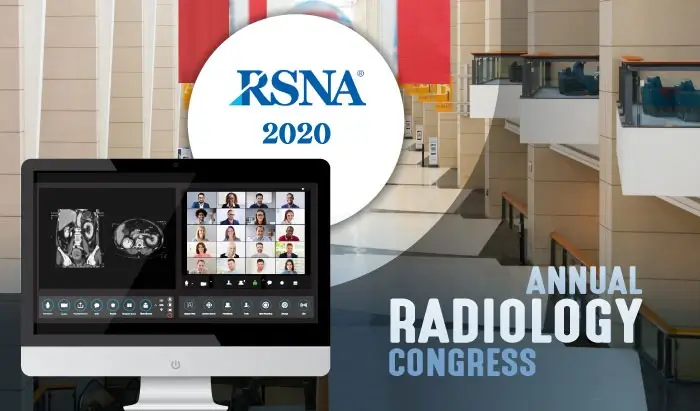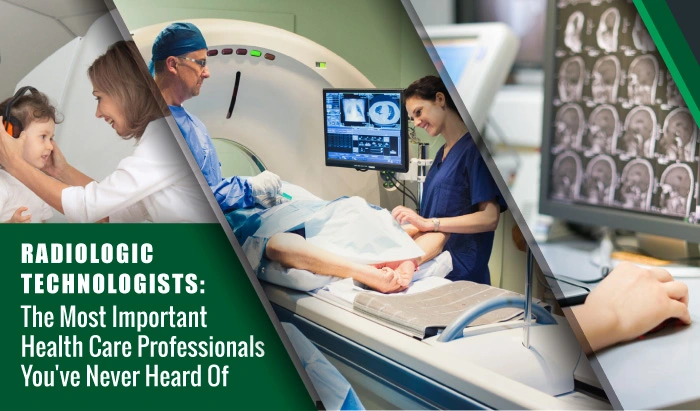Low Attendance at RSNA 2020 Virtual Conference: Losses for RSNA and the Field of Radiology?



On November 29, 2020, the 106th annual meeting of the Radiological Society of North America (RSNA) kicked off—in cyberspace. Due to the global COVID-19 pandemic, the RSNA canceled its in-person annual meeting for 2020. Unless you’re a medical imaging professional, a medical imaging equipment manufacturer, or a resident of Chicago, you may not have noticed the physical absence of the world’s largest radiology meeting, and you might not care. But the cancellation of the RSNA’s 2020 radiology conference and shift to a virtual venue have far-reaching repercussions that impact us all, directly and indirectly.
Radiology is at the forefront of the battle to identify and prevent the spread of COVID-19. Studies, journal articles, and medical news reports discussing the critical role of radiology in the identification and treatment of patients infected with COVID-19 are being published in abundance. (You can read a small sample of these articles about the role of medical imaging here, here, and here.) Given the important role radiology professionals and radiology equipment manufacturers are playing in this pandemic, collaboration, learning,and the sharing of experience and knowledge among radiology professionals is more critical now than ever. And, in perhaps a cruel bit of irony, RSNA conference 2020, the premier event that promotes that professional education, innovations, and sharing of research in radiology practice, was cancelled and moved to a virtual venue due to COVID.
In a May 26 press release, the RSNA announced that RSNA 2020 would be an entirely virtual event. RSNA President James P. Borgstede, M.D., explained that with RSNA members totaling some 52,000 and hailing from 137 countries, it would be impossible to safely hold the annual meeting in person. In his statement, Borgstede also acknowledges the importance of collaboration among radiology professionals in the midst of the coronavirus outbreak and the virtual venue as an attempt to allow that to happen: “Connecting medical imaging professionals from around the world is more important than ever during this time,” he Borgstede said, “and RSNA is doing this in the best and safest way possible.”
Losses for the RSNA Annual Meeting in 2020 for the Field Radiology?
In 2019, the RSNA annual meeting drew 51,800 registrants, 26,552 of which were healthcare professionals. Other registrants include representatives of companies that produce radiology equipment, computer systems for radiology departments, software, or educational and training materials for imaging professionals—all of whom, of course, pay a fee to erect an exhibit on site. According to the RSNA annual financial report of the treasurer, the annual conference in 2019 brought in about $29.5 million dollars in revenue, just over half of the organization’s revenue for the year. And what do they do with the money? Well, nearly half of the RSNA’s expenses (46% or just shy of $24 million) go to research grants and education funding (10%) and the production of publications and educational materials for professionals in the field (36%). These expenses are aimed at expanding the radiology knowledge base and improving clinical practice for radiologists and radiologic technologists and other radiological healthcare professionals.

Source: RSNA 2020 Report of the Secretary-Treasurer

Source: RSNA 2020 Report of the Secretary-Treasurer
While the financial report numbers for 2020 will not be published for some months yet, the sudden shift of the 2020 RSNA conference to a virtual event in the wake of the COVID-19 pandemic may have serious financial repercussions for the RSNA and its contributions to radiology education and research in the coming year. Prior to the cancellation of the in-person assembly in Chicago, the projected number of registrants was approximately 52,000. But, according to RSNA media relations communications, as of December 3, 2020, the number of registrations was approximately 28,000, a little over half of the number of attendees expected for the in-person assembly. Further, while RSNA 2019 boasted 740 technical exhibits, RSNA 2020’s virtual venue has only 235+ virtual exhibits, less than a third of the previous year’s numbers.
| RSNA 2019 | RSNA 2020 |
| 51,800 registrants, including 26,552 healthcare professionals | ∼28,000 registrants |
| 6 days of educational programs | 7 days of educational programs |
| 740 technical exhibits | 235+ technical exhibits |
| 440 education courses and 6 plenary sessions | 120 featured education courses, 40 featured science sessions, and 6 plenary sessions |
| 1,905 education exhibits and 904 scientific posters | 1,400 education exhibits, 90 education courses, and more than 1,000 scientific posters in 16 subspecialties |
| 130+ on-demand education courses and 60 on-demand science sessions | |
| 1700 video uploads for the virtual format |
*RSNA 2019 figures drawn from “RSNA Facts” press release, available here.
*RSNA 2020 figures drawn from “RSNA Facts” press release, available here. Registrations numbers reflect an approximate count as of December 3, 2020, provided by RSNA in a response to inquiry.
If we assume RSNA 2020 was intended to provide approximately half of the RSNA’s revenues for the year, as it did in 2019, what will the lower registrant and exhibitor numbers mean for its funding of research, scientific publications, and educational materials? There is no doubt that the RSNA’s commitment to the field of radiology, radiology healthcare professionals, and the patients they serve would remain steadfast and unwavering, but if fewer funds are available, surely tough decisions will need to be made. And with a novel coronavirus pandemic still surging, such a potential funding loss could hinder the ability of the organization to support the field (and the patients relying on it) when it is most needed.
Is the RSNA really that important?
In a word, yes. The RSNA annual meeting brings together radiology professionals, researchers, equipment, software, and technology manufacturers, department administrators, and others in the field from around the globe to share knowledge, practice, education, research, and innovation. Such professional conferences allow for connectivity between professionals who may not otherwise interact—and if you’ve ever read Granovetter’s 1973 article entitled “The Strength of Weak Ties,” you’ll know that for new ideas and information acquaintances (“weak ties”) are far more important to us than those with whom we have closer relationships (“strong ties”). Some 52,000 professionals in the field sharing knowledge and experience—on department work flow, infection control, imaging procedures for the probably infected, safety precautions for medical professionals, tools, software, and equipment that are proving effective — makes a great difference, especially given that we are in the midst of a truly novel global pandemic situation.
In fact, RSNA President Borgstede opened the RSNA 2020 online conference emphasizing the importance of the radiology community embracing global collaboration now, in the current situation, and in the future. But with only a little over half of the originally projected 52,000 attendees, one can only wonder how much of that global collaboration never happened, how much knowledge and experience was never shared, and what that means for healthcare facilities and patients going forward.

